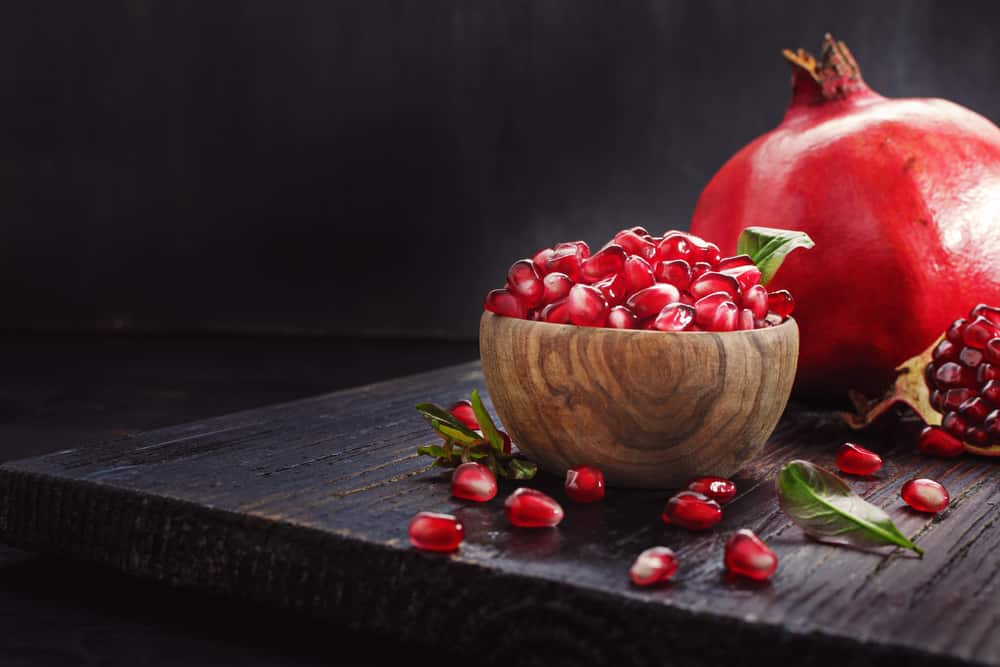
Pomegranate is one of the most common fruits out there, and it wouldn’t be wrong to say that it’s a superfood. For the most part, we only see red pomegranate, but there are many varieties of pomegranate out there, and white pomegranate is one of them. Now, you must be wondering the differences between these two types of pomegranates, and that’s why we are focusing on white pomegranate vs. red pomegranate!
White Pomegranate vs Red Pomegranate
White Pomegranate
Contrary to the usual belief that red pomegranates are more common, white pomegranates are actually from ancient people, and it’s one of the first fruits that’s cultivated around the world. White pomegranates are loaded with antioxidants, which prevents the development of damaging cells because it prevents free radicals. In fact, only two ounces of white pomegranate juice will help with the improvement of the cardiovascular system and also prevents cancer development.
For the first time, this fruit was cultured in Mesopotamia, Jericho, and Egypt, but many people believe that it originated from Turkey and Iran. The white pomegranates are cultivated in subtropical and tropical climates, and it tends to ripe earlier as compared to red pomegranates, and the season is pretty short. When it comes down to appearance, the white pomegranates have pinkish-white and pale skin, and the white flesh is plate as well.
These pomegranates are known for their juicy texture and sweet flavor. In addition, it provides a great source of fiber, vitamin C, potassium, and vitamin B5. On top of everything, white pomegranates are also cultivated for ornamental reasons. It has a protecting coating, commonly called an aril, and it’s the edible part of this fruit along with the seeds. The pomegranate can be cut open with the help of a knife, and the arils have to be separated from the membrane.
Honestly, taking out the aril and seeds can be challenging, but you can soak it in water, and the membrane will float on top – you can remove it to eat the aril and seed. The seeds and aril can be consumed raw, or they can be added to the salads. Moreover, many people dry it for snacking purposes. While the majority of pomegranate varieties are sour and tarty, the white one has a sweeter flavor, which makes it popular among people who don’t like tarty flavor.
Red Pomegranate
Red pomegranate is a common variety of pomegranates among the 500 varieties out there. That being said, the red pomegranates are known for their showy and large appearance, while the top side has orange to red blooms. In addition, it has a vivid red color, which tends to ripe during the late summer to fall season. However, it is important to add that these red pomegranates have more juice and less pulp as compared to other varieties.
The red pomegranate has soft seeds, which makes it suitable for raw consumption, and since they grow in full sun, it leads to proper growth. The red pomegranate plants hardly need water, and it demands more water in hot summer months. Also, the best way of identifying the red pomegranate tree is its moderate height and wide stature. The red pomegranates are usually grown in the Mediterranean gardens and have a high-quality standard.
The best thing about red pomegranate is that it can be grown in the kitchen gardens, and you don’t need to be worried about the soil because it grows pretty well in difficult soil. In addition to fruits, there are flowers on the plant that have a bright orange color. When it comes down to the red pomegranate, it has a tarty and sour flavor which is why it’s used for garnishing the dishes and makes a great addition to the salads for adding extra flavor.
In addition, the red pomegranate is dried up to make anar daana, which is an Indian spice and is used for flavoring up the curries. The red pomegranate is also great for fruit salads and is actually packed with healthy nutrients. To illustrate, these pomegranates can prevent cancer, heart diseases, arthritis, and various inflammatory conditions. All in all, it is pretty easy to find in the grocery stores and is quite affordable as well.
So, which of these pomegranate varieties are your favorite?